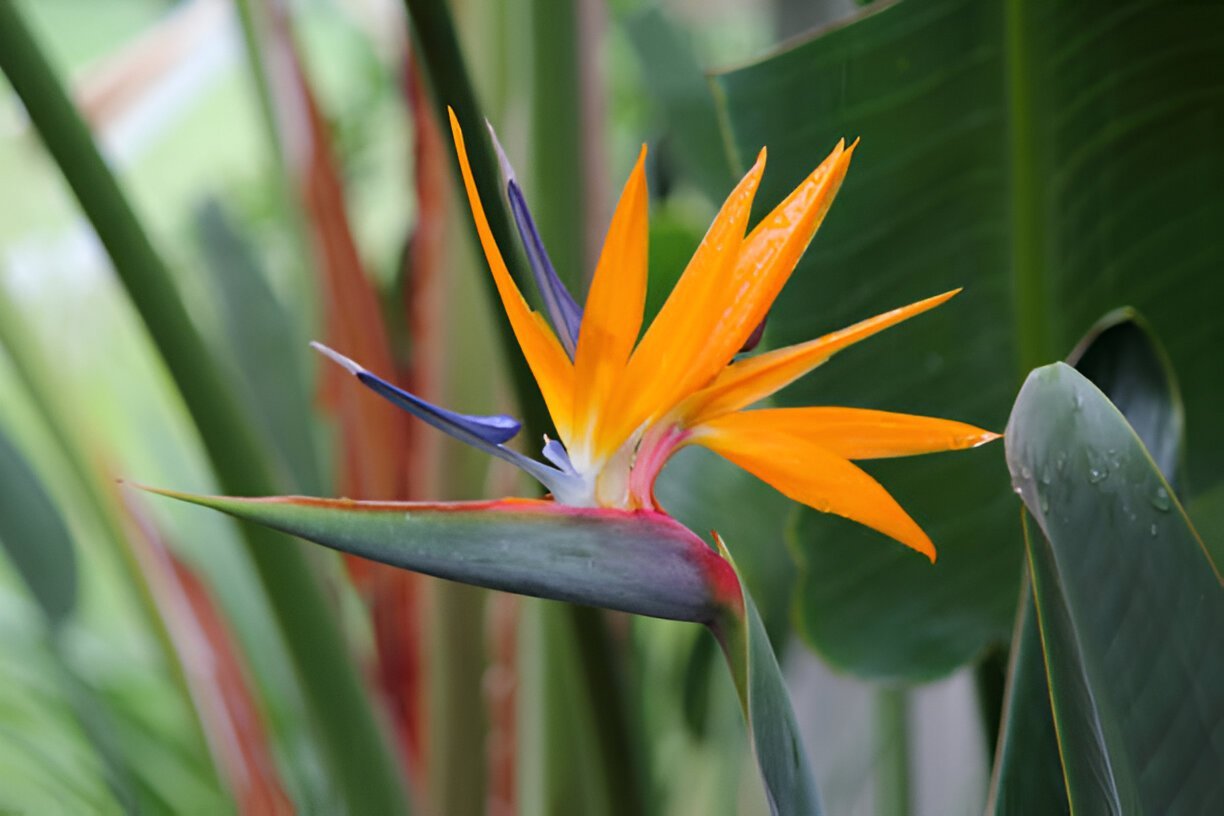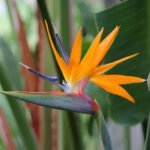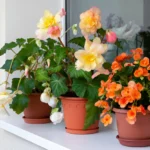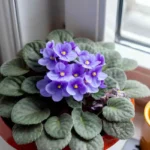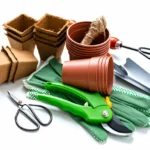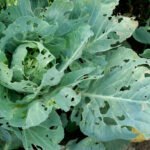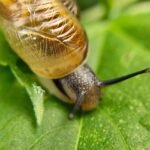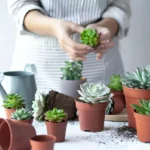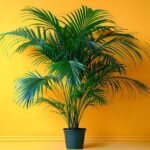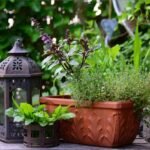Table of Contents
A bird of paradise plant is enough to bring a tropical vibe to the home. Their large leaves and bird-of-paradise flowers can surprise you. I am very fond of their orange flower known as S. Regina. A popular houseplant in America today, plants can be found indoors and in shopping malls, restaurants, and office entrances with plenty of landscaping. Interestingly, there is also a bird named Birds of Paradise, which has beautiful feathers that you will be amazed to see. However, if you want to know about the Birds of Paradise houseplant, this article of mine will be very useful for you.
Quick Facts
Botanical Name: Strelitzia
Native: South Africa
USDA Zones: 10-12
Leaves Size: Large size
Height: 25-30 feet
Blooming Time: Late fall to late spring
Light: Minimum 6 hours
Water: 1-2 weeks
Soil: Well-draining soil
Uses: Air-purifying and popular houseplant
Temperature: High humidity 50-70% and temperature 18-24°C (64-75°F)
Bird of heaven! The flower of heaven! I like their names. Their orange and blue flowers look like birds of paradise, and they have a dramatic look that makes the flowers even more stunning. Before you bring home the birds of paradise, I will tell you about them so that you can consider bringing them home. Because birds of paradise cannot be kept outside in winter regions and must be brought indoors before the fog falls. Birds of Paradise are very popular in California, USA, because of their giant size. They have the ability to reach the ceiling of your house.
Caution While Buying
Before you bring it home, I would highly recommend bringing it home if you have a room with enough light and high ceilings to keep it. But you need to make sure of this as they require a lot of light. I have seen students and new gardeners in California, USA, bring these plants home so they don’t have problems later. It can be seen that the plant cannot be kept in enough sunlight or is attached to the ceiling of the house and the plant is not growing anymore. In my opinion, if your house, home, or office is full of these small things, bring these giant plants.
RELATED: 20 Big Size House Plant
What is BOP?
No wonder! BOP stands for Birds Of Paradise. You will hear this short form on the lips of American gardeners and in nurseries. They say it like this for ease of pronunciation and speaking. The next time your gardening friend asks about BOP, you’ll know he’s asking you about the Birds of Paradise plant.
How to care for Birds of Paradise Plants?
They are quite unpretentious in care; they will not bother you, which is why they are also called low-maintenance plants. Like all other low-maintenance plants, they have very little demand. Once you get the hang of their nature, you won’t have to kill the plant and will be a joy to care for.
Medium
Making a bird of paradise houseplant medium is very easy. I always make a potting mix with perlite, vermiculite, and worm compost. Not that you have to make it this way either. Since the bird of paradise plant is a medium to be kept indoors, you can create a quality complete medium with just a few common ingredients. Bird of paradise plants do not like wet soil, so keep in mind when preparing your medium that the medium is well-drained.
Light
Bright and indirect filtered light is most effective for a bird of paradise plants. The bird of paradise plant is accustomed to the direct sun that we see when we plant them outdoors. Indoors, you can provide five and a half to six hours of light for them. But I think you can put the bird of paradise plant pot in an east-facing window indoors. They can develop well in sunny windows. Keep the area one to one and a half feet from the window, which works better in my opinion. If you are thinking of keeping it in the living room, you can keep it without any hesitation if your room has enough sunlight. It is worth noting that they need a lot of light to bloom indoors.
Water
Birds of paradise love moisture, so they don’t like to sit on wet soil. Allow the topsoil of the BOP to dry out 2-3 inches while you water and keep the bottom slightly moist. During the growing season, you can water every 1-2 weeks, depending on the dryness of the soil. If you have a moisture meter at home, check the humidity before watering. RELATED: How Harmful is Excess Water for Plants? Houseplant Care
Temperature and Humidity
They need a temperature of 18°-27° (C) and 64°-75° (F). Like all other tropical plants, Bird of Paradise plants require 50%-70% high humidity. They can survive in low humidity but drop their leaves and flower buds below freezing. You can use a humidifier at home to control the humidity. However, if you don’t have a humidifier, you can mist the pebble tray and leaves to maintain humidity.
Fertilizer
The plant is known to be a heavy feeder and is fast-growing during the growing season. You can feed them once every 5-8 weeks. In my opinion, balanced liquid fertilizers are very effective. Nitrogen, phosphorus, and potassium (1:1:1) ratio can be bought and mixed with water according to the rules written on the bottle and given to the plant. You can use organic fertilizers while applying fertilizers, which also give good results in BOP.
Repotting
In terms of reporting, you don’t need to report them every year. Their roots are comfortable being slightly compacted into the soil. They are happy with repotting once every two to three years. As a general rule of thumb, during repotting, choose larger pots that are at least 15-17% larger than before. Do not report Bird of Paradise during the winter season. Another important thing to keep in mind when repotting is to try not to repot when the medium is wet. Attempting to repot in wet soil risks breaking the plant’s roots.
Common Problems
Although bird of paradise plants are very hardy, they are naturally susceptible to common diseases. However, there are some common problems that you can easily solve without any trouble. Some of the common problems are mentioned below:
1. Yellow leaves
- Causes: Excess water, underwatering, poor drainage, and nutrient deficiency.
- Solution: Check soil moisture and adjust watering practices. Make sure the soil is well-draining. Fertilize in proportion throughout the growing season.
2. Brown leaves
- Reasons: Low humidity, excess water, and salt content in excess water.
- Solution: Control the humidity and increase it if necessary. Water regularly. Check the salinity level before giving tap water. Use filtered water if needed.
3. Leaf Curling
- Causes: Underwatering, pest infestations, and temperature stress.
- Solution: Make sure you give the plant enough water. Water until the water comes out through the drainage holes. Clean and inspect leaves regularly. Move the plant away from excess light.
4. No Flowering
- Reasons: Young plants, lack of nutrients, insufficient light, and lack of care.
- Solution: First of all, make sure that your plant gets enough sunlight. Add fertilizers and organic fertilizers to the medium during the growing season. Be patient with small plants; they are ready to flower in at least 4-5 years. Don’t forget to add water, humidity, and mist.
5. Pests
- Common pests: Aphids, mites, scale, mealybugs, spider mites.
- Solution: Check the leaves regularly to find pests on the large leaves of the plant. Treat pests with organic insecticides or insecticidal soaps as soon as they appear. Try to have good air circulation around the plant. Apply neem oil spray once a month or more.
6. Root Rot
- Reason: Excess water and lack of drainage medium.
- Solution: Make sure that you don’t overwater while watering to prevent root rot. Overwatering is the only thing that can rot the roots of your healthy plant. Also, prepare a well-draining medium while preparing the medium. Perlite and vermiculite can be used in the medium. You can also put a drainage layer under the pot.
Spend a few minutes observing this common bird of paradise houseplant problems and easily solve them.
Does BOP Need to be Cleaned of Leaves?
Birds of paradise are famous for their large, thick green leaves. They are called the queen of houseplants because of their large leaves. The dense green leaves will bring a tropical atmosphere and feel to your home. I have noticed a lot of dust on their thick and large leaves, which, on the one hand, is very beneficial for our health. However, we should clean this dust coating on the leaves regularly. We all know that plants transpire through leaves, which have tiny pores that can get covered by dust and will fail to conduct the workable energy that passes through the leaves. I regularly use a slightly damp cotton fibre cloth and wipe the leaves gently to make them look cleaner and greener.
Pruning
Leaves and unwanted stems of birds of paradise plants should be pruned away by you. While caring for and growing the Birds of Paradise plant, you will notice that sometimes their leaves turn yellow or brown, split leaves, leaves and branches become excessively long, branches thicken, etc. Then you need to prune for the future welfare of your plant and to shape the plant further. You can use sharp scissors or pruning shears while pruning. Clean pruning shears with rubbing alcohol before use to prevent rotting.
Propagation
You need to propagate to grow a few more BOP seedlings in your home. The easiest and most effective way to propagate Birds of Paradise is by root division. As the Birds of Paradise plant shares many similarities with the banana plant, it can be observed that, like the banana plant, new shoots emerge from the base of the mother plant by dividing the roots. Like banana plants, their leaves emerge from the middle stem, which first appear as long branches and then spread out into long leaves within a few weeks. BOP are not banana plants because banana plants produce fruit and BOP plants only produce their amazing flowers. When you notice this and see the seedlings in the Birds of Paradise plant, don’t immediately go to dividing the seedlings. Allow the seedling to mature to a slightly mature size and shape so that it can survive when you remove the seedling from the mother plant. You have to be careful while dividing the roots; your main goal is to separate the plant while leaving the root intact. If the roots are split, there may be a risk of rotting the roots later on. By dividing the roots this way, you will get several more BOP baby plants. You will also get a good amount of seeds from the seedpods that are created after the flowers of the Birds of Paradise plant have dried. But growing saplings from seed is time-consuming and requires patience. But it is true that you can grow them from seed. You can propagate Birds of Paradise plants from seed in the same way that seedlings are propagated from seed.
Watch this video for more information
When Do Birds of Paradise Bloom?
Indoor plant caregivers Since birds of paradise plants are kept indoors, in my opinion, a baby plant of 4-5 years will grow into a mature plant and will flower indoors if the plant is properly cared for. However, it is true that very few people have managed to get the Birds of Paradise plant to flower indoors. Many people say that it is very rare to see the flowers of indoor plants. Their bird-like flowers bloom from April to June. Birds of Paradise plants flower more readily outdoors than indoors. They need a lot of light to bloom, which if lacking indoors, they fail to bloom.
FAQ
Are Birds of Paradise Toxic to Cats?
= Leaves, twigs, and flowers of the Birds of Paradise plant are toxic to cats and not only to cats but also to dogs and humans. Ingestion of any part of Birds of Paradise may cause stomach upset with vomiting.
How often do you water a bird of paradise plant?
= It may be watered once every 1-2 weeks. Before watering, check that the topsoil of the plant is 2-4 inches dry. A moisture meter or finger method can be used to test.
How to grow birds of paradise from seed?
= We can germinate the seeds of BOP normally. The seeds of BOP are black and round, which we get from the seed pod after they flower. Growing them from seed is very time-consuming. Usually, the seeds germinate in 3-6 weeks and this plant takes about 4-6 years to flower. Soak the Strelitzia reginae seeds in water for at least 24 hours before placing them in the seed germination tray to determine the germination rate. Before sowing the seeds, remove the orange hairs that stick to the seeds.
